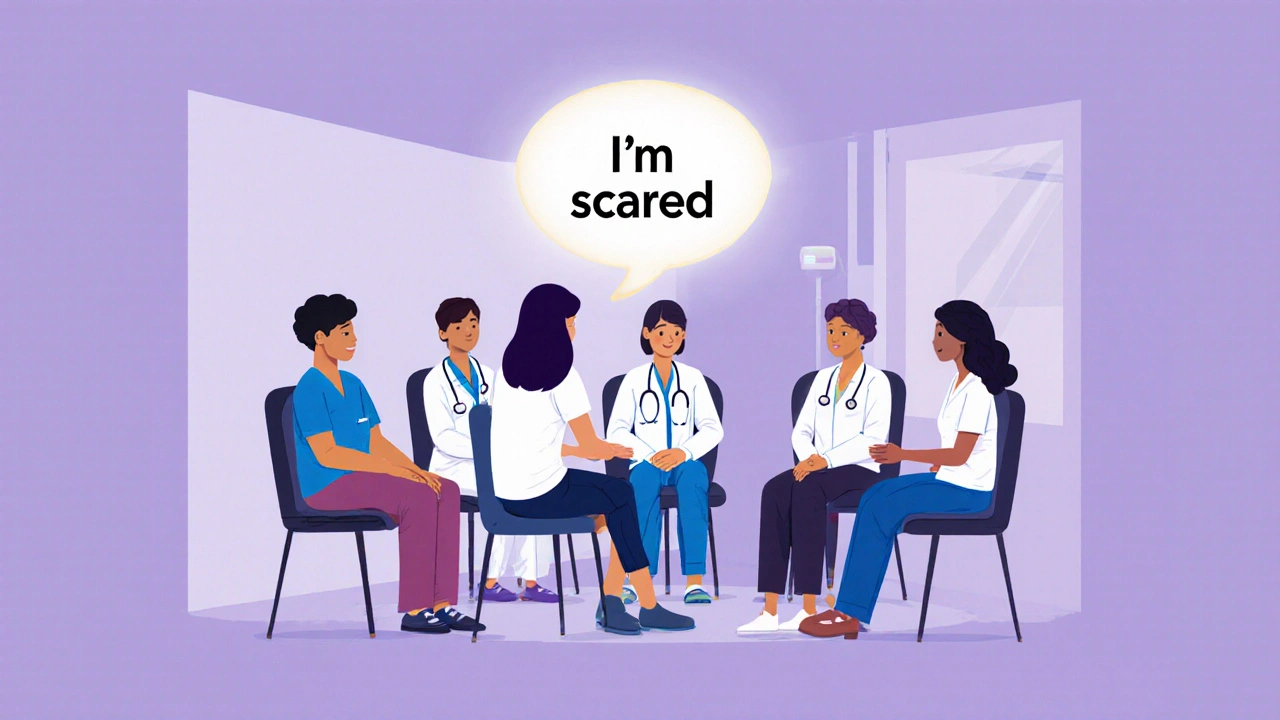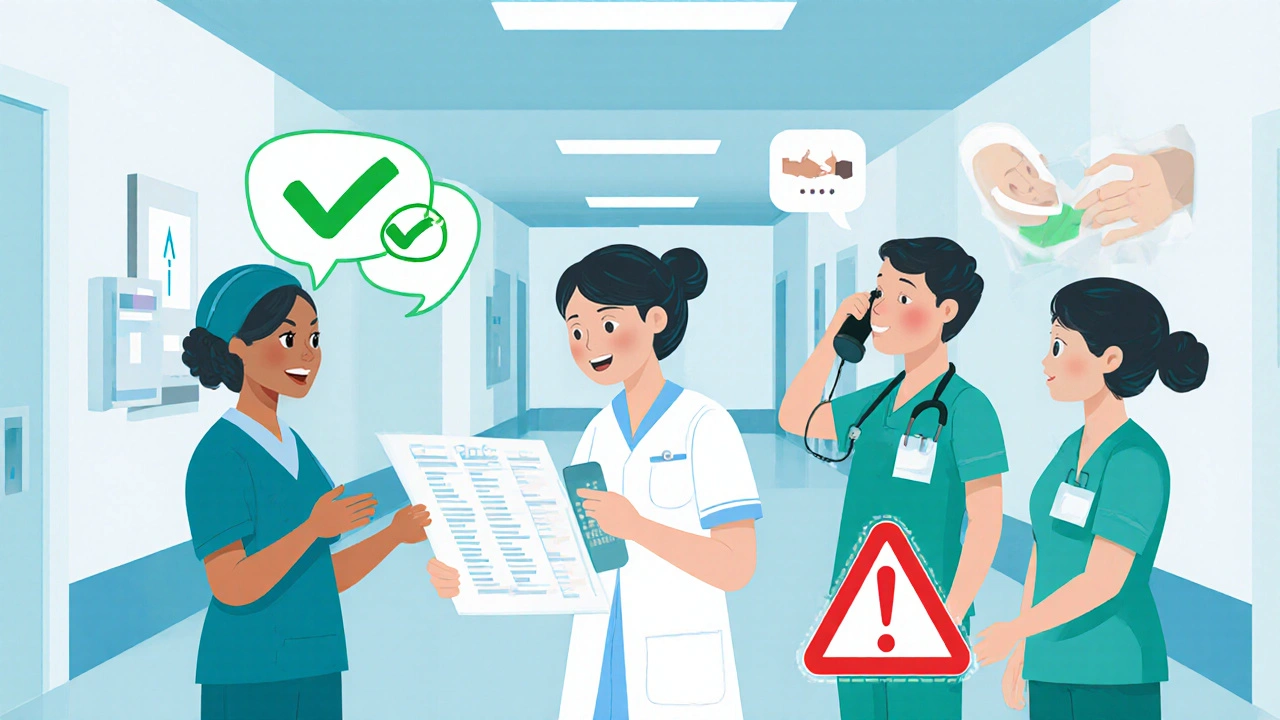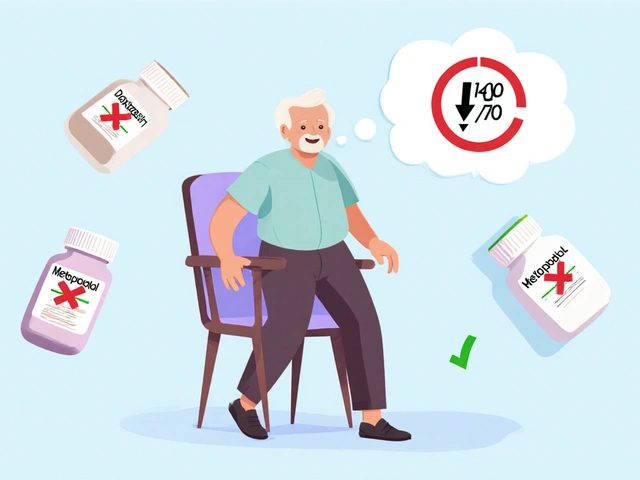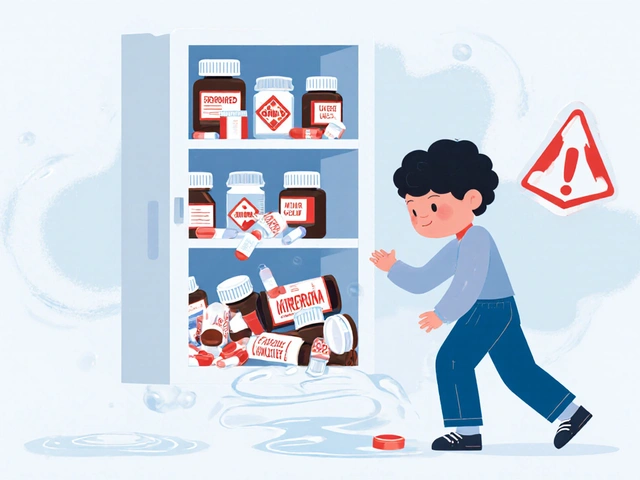
When patients leave the clinic feeling unheard, confused, or rushed, it’s rarely because the doctor didn’t know what to do. It’s because no one took the time to explain it clearly. Poor communication in healthcare isn’t just rude-it’s dangerous. Studies show that communication failures contribute to 80% of serious medical errors, and up to 20% of adverse patient outcomes. Yet most clinicians get little to no formal training in how to talk to patients, families, or even each other. That’s where institutional generic education programs come in.
Why Communication Training Isn’t Optional Anymore
Healthcare systems used to treat communication like a soft skill-something you either had or didn’t. But data changed that. The Agency for Healthcare Research and Quality found that when doctors listened better and explained things clearly, malpractice claims dropped by 30%. Hospitals saw patient satisfaction scores rise sharply, with a strong correlation (r=0.78) between communication quality and how patients rated their care. It’s not just about being nice. It’s about safety. When a nurse doesn’t clearly hand off a patient’s medication list during shift change, someone can get the wrong dose. When a doctor interrupts a patient after just 13 seconds-yes, that’s the average-critical symptoms go unreported. And when language barriers or cultural misunderstandings aren’t addressed, patients skip follow-ups, skip medications, or don’t show up at all. That’s why institutions are now required to train staff. The Joint Commission, CMS, and other regulators now tie reimbursement to communication performance. Hospitals with poor HCAHPS scores on communication questions lose money. That’s not a suggestion. It’s a budget line item.What These Programs Actually Teach
Generic doesn’t mean basic. These programs are structured, evidence-based, and designed to fix specific breakdowns. They don’t just say “be nicer.” They teach concrete behaviors backed by research. Take the Program for Excellence in Patient-Centered Communication (PEP) at the University of Maryland. It trains clinicians to do two things: elicit the patient’s story and respond with empathy. Not vague advice. Specific phrases. For example: “Tell me what’s been going on since your last visit,” instead of “How are you feeling?” Or: “It sounds like this has been really overwhelming,” instead of “I understand.” Mayo Clinic’s course uses 12 real-life video scenarios to show how to set boundaries, manage anger, and handle difficult conversations-like telling someone their cancer has spread. Nurses report a 40% drop in burnout after learning how to say “no” without guilt. Northwestern University’s program goes further. It uses simulation labs where medical students practice with trained actors playing patients. They must hit an 85% proficiency score on communication skills before moving forward. And they repeat it-four to six sessions during clinical rotations. The result? 37% better skill retention after six months than with lectures. Even infection control specialists get training. SHEA’s course teaches hospital staff how to talk to the public about vaccines, handle media questions, and correct misinformation on social media. One infection preventionist in Cleveland said her social media module helped her reach 50,000 people with accurate info-directly countering viral myths.Who Gets Trained-and Who Doesn’t
These programs aren’t one-size-fits-all. They’re targeted. - Frontline clinicians (doctors, nurses, PAs) get patient-centered training: listening, empathy, breaking bad news. - Administrators and public health staff get policy and media training: how to communicate during outbreaks, how to work with journalists, how to craft public health messages. - Interprofessional teams get collaboration training: how nurses, pharmacists, and social workers can speak the same language during handoffs. But here’s the gap: rural hospitals and small clinics often don’t have the budget or staff to run these programs. Only 22% of rural facilities have formal communication training. Meanwhile, big hospital systems like Mayo, Johns Hopkins, and Northwestern have entire departments dedicated to it. And while 74% of new programs now include cultural humility training-teaching providers how to address bias and language barriers-60% of existing programs still skip this. That’s a problem. AHRQ found a 28% gap in communication satisfaction between white patients and patients of color. Training that ignores equity isn’t just incomplete-it’s harmful.
Real Results, Real Challenges
The data on outcomes is clear: - 30% fewer malpractice claims among trained physicians (Johns Hopkins, 2019) - 23% higher patient satisfaction scores with PEP-style training (University of Maryland, 2018) - 28% fewer patient complaints in residency programs using mastery learning (Northwestern, 2023) But implementation is messy. Many clinicians say they know what to do-they just don’t have time. A 2023 AAMC survey found 58% of providers felt communication skills were important but couldn’t fit them into 15-minute appointments. Others resist. One in five clinicians still believe communication can’t be taught. That’s where peer modeling helps. Mayo Clinic has senior doctors lead 60% of training sessions-not because they’re perfect, but because their colleagues trust them. Simulation anxiety is real too. Some learners freeze during role-plays. Northwestern found 35% of residents felt uncomfortable at first. But after a few sessions, most said it changed how they talked to patients forever. The biggest barrier? Faculty development. As Northwestern’s Dr. Vineet Arora put it: “We can train students all we want, but if the attending physicians don’t model the behavior, it won’t stick.”How Programs Are Evolving
The field is moving fast. In 2024, the Academy of Communication in Healthcare launched AI-powered feedback tools that analyze clinician-patient conversations and give real-time suggestions-like “You interrupted three times in the last minute” or “You used medical jargon.” Pilot data shows 22% faster skill acquisition. Telehealth is another driver. With 35% of new programs now including virtual communication modules, providers are learning how to read body language on Zoom, manage tech glitches, and build trust without being in the same room. And the push for interprofessional training is growing. Sixty-one percent of institutions are now designing programs where nurses, pharmacists, and social workers train together. Because communication doesn’t stop at the doctor’s door-it happens across teams.What Works-and What Doesn’t
Not all training is created equal. Here’s what makes a program effective:- Focus on 3-5 behaviors, not 20. Pick the ones that matter most in your setting.
- Use real scenarios from your own clinic or hospital. Generic examples don’t stick.
- Embed prompts in the EHR. A pop-up that says, “Ask: ‘What’s your biggest concern today?’” changes behavior.
- Train leaders first. If the department head doesn’t model good communication, no one else will either.
- Measure over time. Most programs stop tracking after six months. But skills fade without reinforcement. Tulane’s study showed improvement plateaued at 70% without follow-up.
Where to Start
If your institution doesn’t have a program yet, here’s a simple roadmap:- Look at your patient feedback. What do people complain about? “Didn’t understand,” “Felt rushed,” “No one explained my meds”-these are your starting points.
- Choose one high-impact skill. Start with “eliciting the patient’s story.” Train everyone on that one thing.
- Use free resources. The UT Austin Center for Health Communication offers free pandemic communication modules. ACHonline.org has 125 evidence-based tools.
- Find a champion. Someone who’s good at this and willing to lead. They don’t need to be a doctor-could be a nurse, a social worker, even a medical assistant.
- Track it. Use surveys, EHR notes, or even a simple post-visit question: “Did you feel heard today?”
Are healthcare communication programs only for doctors?
No. These programs are designed for all healthcare staff, including nurses, pharmacists, medical assistants, social workers, and administrative staff. Communication failures often happen during handoffs between roles, so training the whole team improves safety and efficiency. Programs like Northwestern’s and Mayo’s include interprofessional simulations specifically to address this.
Do these programs actually change patient outcomes?
Yes. Multiple studies show improved outcomes: 30% fewer malpractice claims, 23% higher patient satisfaction scores, and better adherence to treatment plans. When patients understand their diagnosis and next steps, they’re more likely to take medications correctly and show up for follow-ups. Communication training doesn’t cure disease-but it helps patients manage it better.
How long does it take to see results from communication training?
Skills improve within weeks, but full integration takes 3-6 months. Learning to listen deeply or deliver bad news with empathy isn’t like learning a new software. It’s a habit shift. Northwestern’s data shows skill retention spikes after four to six simulation sessions. Long-term success requires ongoing reinforcement-like monthly check-ins, peer feedback, or EHR prompts.
Are there free communication training resources available?
Yes. The University of Texas Austin’s Health Communication Training Series (HCTS) offers free, self-paced video courses, including modules on pandemic communication and health equity. The Academy of Communication in Healthcare (ACH) also provides over 125 free teaching tools rated excellent by users. These are great starting points for clinics or hospitals without large training budgets.
Why do some clinicians resist communication training?
Some believe communication is innate, not teachable. Others feel it adds time to already packed days. A small group (15-20%) also feel defensive, thinking it implies they’re bad at their job. The most effective programs address this by using peer leaders-senior clinicians who model the behavior-and showing data: “Here’s how your peers improved after training.” When clinicians see real results, resistance drops.
Does communication training help with health disparities?
Yes, but only if it’s designed to. Programs that include cultural humility, language access, and bias awareness reduce the 28% satisfaction gap between white patients and patients of color. The 2023 AAMC report found that 74% of new programs now include equity-focused content. Without this, training can unintentionally reinforce existing disparities by assuming all patients respond the same way.




jalyssa chea
November 16, 2025 AT 14:10So u just saying if doc talks nice ppl dont die lol
Peter Stephen .O
November 17, 2025 AT 23:23Bro this is the most real shit i’ve read all year. I’ve seen nurses cry after a bad handoff because no one told them the patient was allergic to penicillin. It’s not about being sweet-it’s about not killing people by accident. Training that actually teaches you how to say ‘Your mom’s not coming back from this’ without sounding like a robot? That’s not fluffy-it’s lifesaving. And yeah, the EHR pop-ups? Genius. I’ve had one that said ‘Ask about their biggest fear’ and I didn’t even realize I’d been skipping that until it hit me. Game changer.
Rob Goldstein
November 18, 2025 AT 07:45As a pharmacist who’s seen 3 near-miss medication errors due to unclear handoffs, this hits home. The interprofessional training modules at my hospital-where we role-played with nurses and social workers-cut our med reconciliation errors by 40% in six months. The key is consistency. One-off workshops are theater. But when you embed communication benchmarks into your daily workflow-like mandatory 30-second check-ins before discharge-it sticks. Also, the AI feedback tools? They’re not perfect yet, but they caught me using ‘benign’ instead of ‘not life-threatening’ three times in one session. Turns out patients think ‘benign’ means ‘ignore it.’
Jennie Zhu
November 19, 2025 AT 20:04It is imperative to underscore that the integration of structured communication protocols within institutional frameworks constitutes a non-negotiable pillar of patient safety. Empirical data derived from longitudinal cohort analyses conducted by the Agency for Healthcare Research and Quality substantiate the assertion that linguistic clarity and empathetic engagement significantly mitigate adverse clinical events. Furthermore, the operationalization of these competencies necessitates a hierarchical endorsement from administrative leadership, as behavioral modeling at the executive level serves as a critical determinant of organizational compliance.
Julie Roe
November 20, 2025 AT 23:38I’ve been in this game for 22 years and I’ve seen every trend come and go. ‘Patient-centered care’ was big in the 90s, then ‘cultural competency’ in the 2000s, now it’s ‘communication training’-but here’s the thing: it’s not about the buzzwords. It’s about who gets to lead it. At my hospital, we started with the night shift nurses-they’re the ones who actually know what’s going on with patients, not the docs who pop in for 8 minutes. We had them lead weekly 15-minute huddles where they shared one thing they wished the doctors had said differently. It started with ‘I wish they’d asked if I was scared’ and ended with the whole ER team using the phrase ‘What’s your biggest worry?’ before any discharge. No one got fired. No one got praised. But the complaints dropped. And the nurses? They finally felt like part of the team. That’s the secret. Not the training modules. The trust.
Also, the AI tools? Cute. But I’ve seen them misread sarcasm as hostility. One nurse got flagged for saying ‘Yeah, right’ after a patient claimed they’d taken their meds. Turns out the patient was being sarcastic. The AI didn’t get it. The human did. Don’t outsource empathy to an algorithm.
And rural clinics? They’re not failing because they’re lazy. They’re failing because they’re understaffed and underfunded. You can’t train someone to be a better communicator if they’re covering three units alone and haven’t eaten since 7 a.m. Fix the system first. The training’s just the bandage.
Oh, and the cultural humility stuff? Don’t just add a slide about ‘implicit bias.’ Get real. Have a Somali interpreter lead a session. Let a Black nurse tell her story about being told ‘you’re too emotional’ for asking why her patient’s pain meds were delayed. That’s not training. That’s truth-telling. And truth sticks.
I’ve had patients cry because I said ‘I’m sorry this is so hard’ instead of ‘It’s normal to feel this way.’ One said, ‘No one’s ever said that before.’ That’s the goal. Not perfection. Just presence.
And for the love of God, stop making everyone watch 45-minute videos. Just give them a laminated card with three phrases: ‘Tell me what’s been going on,’ ‘That sounds really hard,’ and ‘What do you need right now?’ Put it on the clipboard. Have them read it before each visit. That’s it. That’s the whole program.
And if you think this is ‘fluffy’? Go sit with someone who just got a terminal diagnosis and watch how fast their eyes light up when you don’t talk over them. That’s not soft skill. That’s sacred work.
Gary Lam
November 22, 2025 AT 23:31Wow so now doctors have to be therapists AND linguists AND social workers? What’s next? Do they also have to fold your laundry? 😂 I get it, communication matters-but when your 15-minute slot is already packed with 3 meds to adjust, 2 labs to explain, and a patient who thinks their headache is brain cancer, telling them ‘Tell me what’s been going on since your last visit’ feels like asking someone to solve world hunger while they’re drowning.
Also, the AI feedback tool that says ‘You interrupted three times’? Bro, I interrupted because the patient was rambling about their cat’s anxiety. Not the aortic aneurysm. Priorities.
But… I’ll admit. Last week I said ‘I understand’ to a guy who’d been misdiagnosed for 3 years. He started crying. I didn’t say anything else. Just sat there. He said ‘No one’s ever just sat.’ I didn’t get a medal. But I got a thank-you note. Maybe… maybe we’re not doing this wrong. Just too fast.
Kathy Grant
November 24, 2025 AT 08:32There’s a quiet kind of violence in how we treat communication in medicine. Not the kind with fists or knives-but the kind that whispers ‘you’re not important enough to explain’ to someone who’s terrified. I’ve sat in waiting rooms where people hold their discharge papers like they’re holding a bomb they don’t know how to defuse. They don’t ask questions because they’ve been trained-by years of rushed visits-to believe their fear is a burden. And we call that ‘efficiency.’
What if the real diagnosis isn’t the tumor or the hypertension, but the silence between the words? What if healing begins not with a prescription, but with a pause? I’ve seen nurses who’ve memorized the exact tone to use when saying ‘I’m here’-not ‘I’m here to check your vitals’-but ‘I’m here.’ Just those two words. And patients… they breathe differently after that.
Training shouldn’t be about scripts. It should be about reclaiming the sacred space between a human being and their fear. That’s not policy. That’s poetry. And poetry doesn’t fit in a bullet point. But it saves lives.
Andrew Cairney
November 24, 2025 AT 19:11ALERT. COMMUNICATION TRAINING IS A GOVERNMENT PLOT TO CONTROL DOCTORS. 🚨 The Joint Commission? CIA front. CMS? They’re tracking your speech patterns. Why do you think they’re pushing ‘empathy’? So they can label you ‘non-compliant’ if you don’t say the right words. And those AI tools? They’re recording every word you say to patients and feeding it to insurance algorithms to deny your claims later. I know a guy who got audited because his EHR said he ‘used too much emotional language’ during a stroke discussion. He was told to ‘reduce affective expression.’
Also, why are they training nurses to talk to patients but not the insurance reps who tell people ‘your treatment isn’t covered’? That’s the real communication failure. The system is rigged. The training is a distraction. Don’t be fooled. 🤖
vinod mali
November 26, 2025 AT 18:54in india we dont have these fancy programs but we do have something better-family. when a patient is scared, the whole family sits with them. they ask questions. they argue with the doctor. they remember the meds. maybe we dont have training but we have community. maybe the west needs to learn from that.
Robert Merril
November 27, 2025 AT 14:50So we’re spending millions to teach doctors to say ‘I hear you’ instead of fixing the 3 hour wait times? 😂 I’ve had my aunt wait 6 hours for a CT scan and then the doc walks in says ‘you’re doing great’ while holding a coffee. No. Just no. Training’s great but fix the system first. Or at least give us more time. And stop calling it ‘patient-centered’ when the whole damn system is profit-centered.
Noel Molina Mattinez
November 29, 2025 AT 11:22Why do we need training to talk to people? Isn't that just being human? I mean come on. If you can't listen to someone who's scared you shouldn't be a doctor. End of story. Why make it a program? Why make it a policy? Just be decent. That's all.
Roberta Colombin
December 1, 2025 AT 08:02It is important to recognize that communication is not merely a tool, but a bridge between clinical expertise and human vulnerability. When we prioritize structured, equitable, and culturally grounded dialogue, we do not diminish the role of medical knowledge-we elevate its purpose. Every patient deserves to be met not as a case, but as a person whose story matters. This is not a trend. It is a moral imperative.
Deepali Singh
December 1, 2025 AT 09:50These programs are just corporate PR. The same hospitals that train staff to say ‘I’m here for you’ are the ones cutting beds, firing nurses, and raising prices. You can’t fix systemic neglect with a 2-hour workshop. This is performative compassion. It’s a distraction from the real issue: healthcare is a business, not a right.
Peter Stephen .O
December 1, 2025 AT 11:30Man I just read Julie’s comment and I’m crying. She’s right. It’s not about the scripts. It’s about the pause. I used to think I was good at communication until a patient’s wife said ‘You said everything right. But you didn’t look at us.’ I hadn’t even realized I was looking at the screen the whole time. I started looking up. Just looking up. And suddenly they started talking. Not just answering questions-talking. Like they’d been waiting for someone to see them. That’s the magic. Not the training. The gaze.